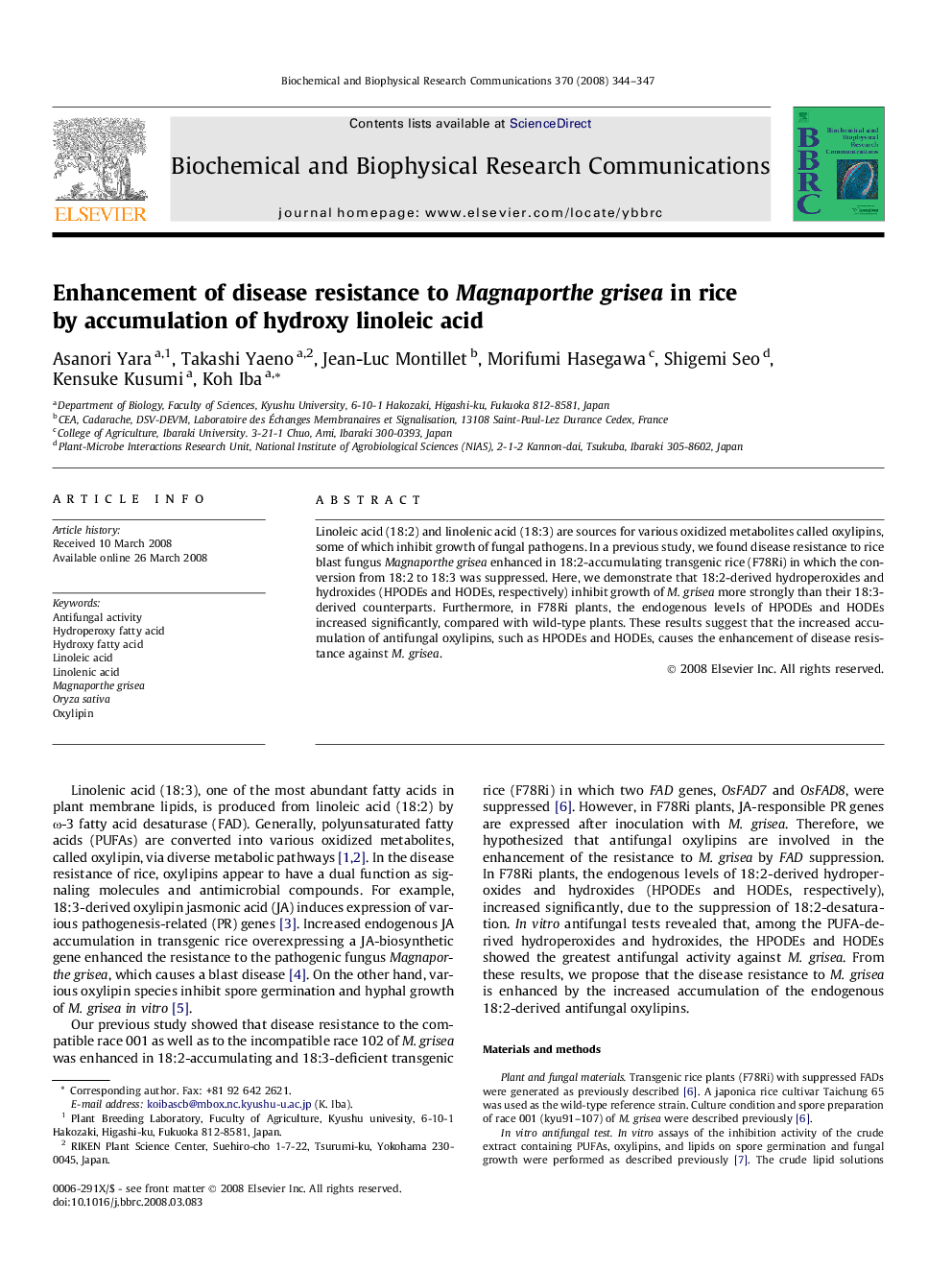| Article ID | Journal | Published Year | Pages | File Type |
|---|---|---|---|---|
| 1935776 | Biochemical and Biophysical Research Communications | 2008 | 4 Pages |
Abstract
Linoleic acid (18:2) and linolenic acid (18:3) are sources for various oxidized metabolites called oxylipins, some of which inhibit growth of fungal pathogens. In a previous study, we found disease resistance to rice blast fungus Magnaporthe grisea enhanced in 18:2-accumulating transgenic rice (F78Ri) in which the conversion from 18:2 to 18:3 was suppressed. Here, we demonstrate that 18:2-derived hydroperoxides and hydroxides (HPODEs and HODEs, respectively) inhibit growth of M. grisea more strongly than their 18:3-derived counterparts. Furthermore, in F78Ri plants, the endogenous levels of HPODEs and HODEs increased significantly, compared with wild-type plants. These results suggest that the increased accumulation of antifungal oxylipins, such as HPODEs and HODEs, causes the enhancement of disease resistance against M. grisea.
Keywords
Related Topics
Life Sciences
Biochemistry, Genetics and Molecular Biology
Biochemistry
Authors
Asanori Yara, Takashi Yaeno, Jean-Luc Montillet, Morifumi Hasegawa, Shigemi Seo, Kensuke Kusumi, Koh Iba,
